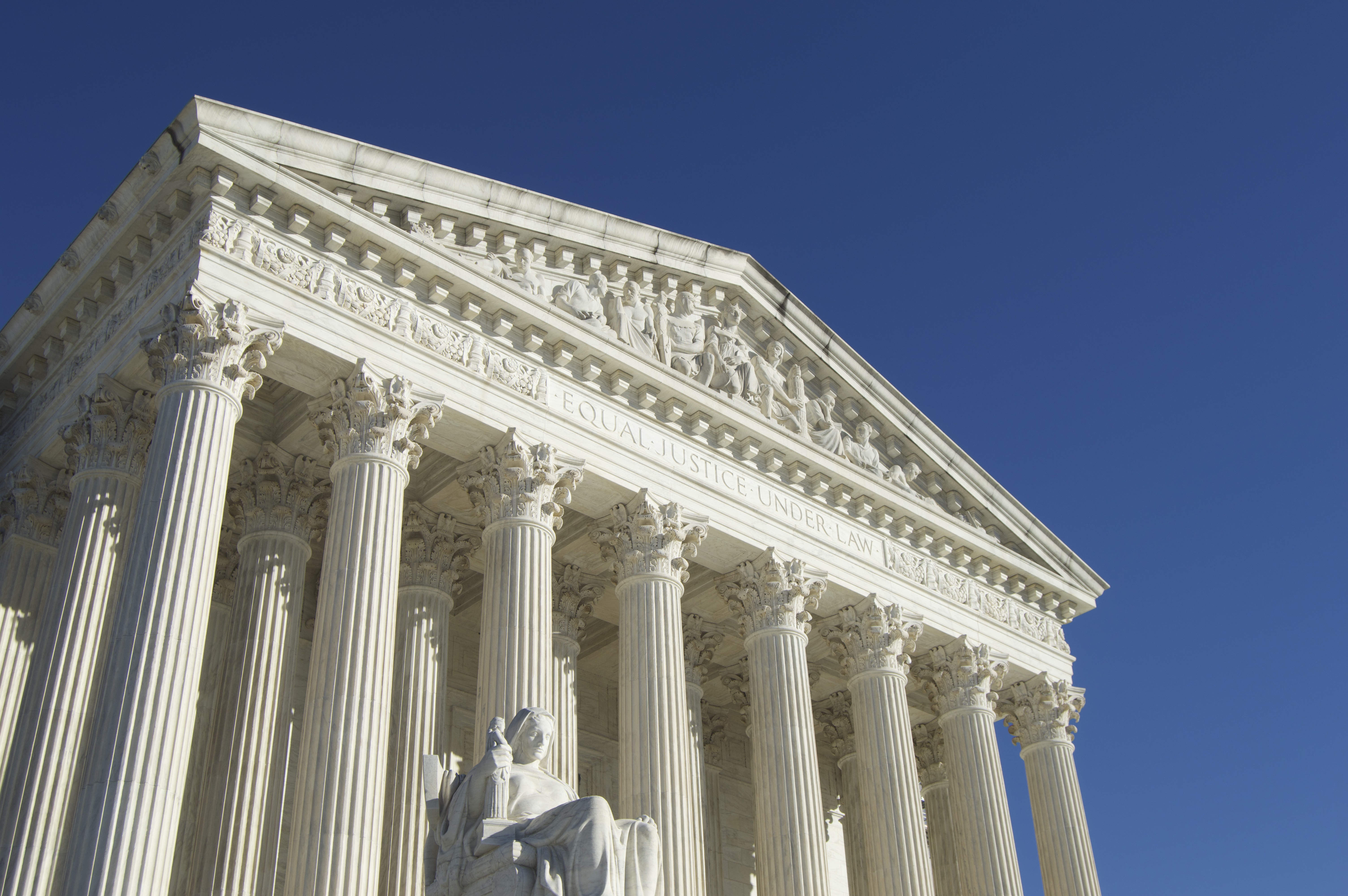Section 3 Disqualification Answers—and Many More Questions

Published by The Lawfare Institute
in Cooperation With

Nobody who listened to the oral argument last month in the Colorado Section 3 disqualification case can be too surprised that the Supreme Court ruled 9-0 that the Colorado Supreme Court erred in striking former President Donald Trump from the state primary ballot. Yet the decision has to count as one of the more rancorous unanimous per curiam Supreme Court rulings in recent memory. It is also, at times, one of the most cryptic.
With its terse, 20-page ruling (which includes two concurrences) in Trump v. Anderson, the Supreme Court brought a hard stop to more than 30 pending litigations and administrative proceedings around the country seeking to keep former President Trump off primary ballots for the presidential election as a consequence of his having engaged in insurrection within the meaning of Section 3 of the 14th Amendment. The decision reverses the Colorado Supreme Court, which had excluded Trump under the clause, and effectively annihilates tentative rulings in two other states—a secretary of state’s decision in Maine and a state trial court ruling in Illinois—that also would have excluded Trump. (Maine’s secretary of state has already issued a modified ruling in light of the opinion.)
But while the ruling obviates the potential chaos that Section 3 disqualifications could have unleashed on the state-by-state presidential primary process, it pushes a number of other questions down the road, to be addressed if and when the question of Trump’s eligibility reaches Congress should he win the general election in November. On the one hand, the majority goes further than some of the liberal justices think was necessary in answering the question of Trump’s ballot eligibility for Colorado, insisting on congressional action to effectuate Section 3 disqualifications. Even so, the majority’s opinion does not obviously preclude Trump’s ultimate disqualification by a Congress that truly wanted to do it.
The Decision
The decision comes in three separate parts: a per curiam opinion, a two-paragraph concurrence in part and concurrence in the judgment by Justice Amy Coney Barrett, and a longer concurrence in the judgment by Justices Sonia Sotomayor, Elena Kagan, and Ketanji Brown Jackson. The decision to frame the lead opinion as a per curiam is an interesting one, as that term is generally used to indicate an opinion of the court itself as opposed to any individual justice, suggesting a degree of unanimity or consensus that is not quite present here. No doubt that is what the justices hoped to project, at least on the disposition of the present case. But beyond the case’s disposition, there is serious disagreement among the justices, only five of whom signed onto the whole of the per curiam opinion’s analysis.
Beyond its recitation of the facts and procedural posture, the only part of the per curiam opinion that appears to have garnered the support of more than five justices is Part II.B, which addresses the states’ ability to enforce Section 3. Even there, there is some doubt about how much support Part II.B actually has: Of the four concurring justices, only Justice Barrett says that she joins this part of the opinion, and she suggests that she would only have addressed Section 3 as it relates to the presidency—a limitation Part II.B does not by its terms reflect. That said, the other concurring justices suggest that even they agree with the broad tenor of Part II.B’s analysis as it relates to the presidency, though they only officially concur in the judgment.
Part II.B begins with the authority the Court concedes that the states do have: to enforce Section 3 as it relates to state offices, in line with their broader constitutional authority to determine the qualifications for state office. But it rejects the proposition that states have any authority over federal officeholders and candidates. Such authority would have to be delegated to the states, the Court notes, and the 14th Amendment does not do that; to the contrary, the 14th Amendment was actually intended to restrict state authority and empower the federal government instead. Moreover, allowing the states to make disqualification determinations under Section 3 would result in an untenable “patchwork” of ballot results across the country, one that would raise “heightened concerns” in the context of a national presidential election. Given these considerations—and particularly in the absence of any tradition of state enforcement—the Court concludes that there is simply no basis for concluding that the states are as empowered to enforce Section 3 as the federal government.
It’s in discussion of the federal government’s capacity to take such steps, however, that the Court’s consensus begins to break down. Leaning heavily on the logic in Chief Justice Salmon Chase’s 1869 circuit court opinion in Griffin’s Case, Part II.A of the per curiam opinion holds that, while Section 3 of the 14th Amendment disqualifies certain individuals who engage in insurrection from holding office, it is up to Congress to implement that disqualification and determine to whom it applies through “appropriate legislation” pursuant to Section 5 of the amendment. Towards this end, the per curiam opinion notes that Congress took steps to do so, first through the Confiscation Act of 1862—part of which remains in law in the form of 18 U.S.C. § 2383, a criminal prohibition on incitement that disqualifies those convicted from holding office—and later through the Enforcement Act of 1870. While the per curiam opinion does not come out and say it, the strong implication is that, as these provisions—aside from 18 U.S.C. § 2383, under which former President Trump has not been charged—have long since lapsed, there is no statutory mechanism in place for disqualifying individuals under Section 3 until Congress chooses to enact a new one.
This is the point on which the concurrences depart from the majority. In her brief concurrence, Justice Barrett suggests that she would not have reached “the complicated question whether federal legislation is the exclusive vehicle through which Section 3 can be enforced” as doing so was not necessary to resolve the present case, which could be resolved solely on the grounds that states lack any such authority as it relates to the presidency. At the same time, Justice Barrett tries to tamp down impressions of disagreement on the Court, noting that “[a]ll nine Justices agree on the outcome of the case” and “[t]hat is the message Americans should take home.”
In their concurrence in the judgment, the three other justices are not so generous. They openly accuse the majority behind the per curiam opinion of choosing to “decide novel constitutional questions to insulate this Court and [former President Trump] from future controversy” in ways not necessary to resolve the present case. On the substance, they object to the majority’s full embrace of Griffin’s Case, noting that it is not binding precedent and is inconsistent with some early practice around disqualification. They also highlight how the majority’s ruling is inconsistent with how the Supreme Court has often treated other provisions of the 14th Amendment as self-executing, as well as Section 3’s own grant of authority to Congress to remove any disqualification with a supermajority vote—something, they note, that would seem unnecessary if Congress could just avoid extending disability in the first place by a simple majority refusing to enact implementing legislation. Yet the most notable part of this concurrence is the motivation the justices ascribe to the majority’s decision to, in their view, go beyond what is necessary to resolve the immediate case: “to limit how Section 3 can bar an oathbreaking insurrectionist from becoming President.”
The Open Questions
The only question the Court’s decision clearly resolves is whether states have the authority to disqualify anyone from standing as a candidate for president by virtue of Section 3, as Colorado attempted to do in Trump v. Anderson. The unanimous Court’s unequivocal answer is that they do not have that authority—at least not in the absence of congressional legislation granting it. This means that the various state-level legal proceedings seeking to disqualify former President Trump from the ballot that we have been closely tracking for the past several months have all been effectively shut down. The majority opinion (but neither of the concurrences, at least not clearly) extends this same logic to state-level proceedings seeking to do the same for candidates for other federal offices as well. Indeed, barring conviction under 18 U.S.C. § 2383 or further federal implementing legislation, no former officeholder involved in the Jan. 6 attack on the Capitol, no matter how brazenly, is ineligible to stand as a candidate for federal office by virtue of Section 3. The same is not necessarily true of state office, however, as the Supreme Court acknowledges that state legislatures retain their independent ability to determine the eligibility criteria for state-level offices and can still choose to disqualify individuals for violations of Section 3, even absent federal legislation to that effect.
Far less clear is what the Court’s five-justice majority opinion means for the next big moment when efforts might arise to enforce Section 3: when Congress counts electoral votes on Jan. 6, 2025. One interpretation is that the majority has effectively barred members of Congress from objecting to electoral votes for Trump on this basis. The majority writes, for instance, that “[t]he Constitution empowers [only] Congress to prescribe how [Section 3 disqualification] determinations should be made” through “appropriate legislation.” The three-justice concurrence interprets this language broadly, writing that the majority “foreclose[s] future efforts to disqualify a Presidential candidate under [Section 3]” by “shut[ting] the door on other potential means of federal enforcement” apart from federal legislation, presumably including the House and Senate’s power to take this step. On this reading, absent federal enforcement legislation, no one has the power to disqualify Trump under Section 3. Since no such legislation is currently on the books (other than 18 U.S.C. § 2383), Trump cannot under this reading of the majority opinion currently be disqualified from federal office by anyone.
Yet other parts of the majority’s opinion lend themselves to less exclusive readings. At one point, the majority acknowledges that, following the 14th Amendment’s ratification, each house of Congress also took steps to disqualify both members-elect and sitting members from holding office for violating Section 3, without any clear federal implementing legislation. The majority describes this as a reflection of the House and Senate’s “unique powers under Article I to adjudicate challenges contending that certain prospective or sitting Members could not take or retain their seats due to Section 3.” Just as the majority leaves intact the states’ legal authority to bar individuals from state office for violating Section 3 absent federal implementing legislation, it appears to accept that each chamber of Congress can choose to exercise its exclusive constitutional authority to exclude or expel members on the basis of Section 3, even without federal implementing legislation.
For some, this will no doubt raise the question of whether there are other avenues to federal enforcement the majority implicitly leaves open, including during the counting of electoral votes. After all, federal law permits members of Congress to object to electoral votes on the grounds that they were not “regularly given”—an ambiguous term that was at the heart of many of the attempted machinations around the counting of 2020 electoral votes but nonetheless survived into the recently adopted Electoral Count Reform Act (ECRA) that now governs how electoral votes should be counted. If one believes—as many of Trump’s supporters argued after the 2020 election—that this reflects an inherent and exclusive authority on the part of the House and Senate to pass judgment on the validity of electoral votes, then perhaps this survives the majority’s holding as well. And if it does, then some may well argue that it provides grounds for disqualifying Trump under Section 3, even in the absence of federal implementing legislation.
How one feels about this prospect likely depends on how persuasive one finds the case that the House and Senate have broad authority to pass judgment on the validity of electoral votes in the first place—a question on which partisan interests may have flipped dramatically since the counting of 2020 electoral votes. To be certain, the majority opinion—and the three-justice concurrence’s accusation that the majority has “foreclose[d] future efforts to disqualify a Presidential candidate under [Section 3]”—strongly suggests that they understand federal implementing legislation to be necessary in such a scenario. But the glimmer of doubt that the majority opinion’s ambiguity leaves may be enough for at least some members of Congress to try.
Also unclear—though perhaps less so—is what the majority means for the last possible legal avenue for disqualification under Section 3 that would exist if Trump were inaugurated as president: legal challenges to federal actions that he pursues on the grounds that he is not lawfully president as a consequence of disqualification under Section 3. The three-justice concurrence asserts that the majority’s discussion of the need for implementing legislation “forecloses judicial enforcement of [Section 3], such as might occur when a party is prosecuted by an insurrectionist and raises a defense on that score.” Those concurring justices, at least, clearly believe the majority has foreclosed such legal challenges.
Yet the majority declines to squarely address this scenario, leaving space, perhaps, for ambitious litigants—or those pursuing a legal Hail Mary—to argue that this is another means of enforcement the majority implicitly left open through its silence. That said, the majority’s holding—and the three-justice concurrence’s understanding of it—undoubtedly weighs against such a reading, particularly if the issue were to come before the current line-up of justices.
Nor does the majority weigh in on certain substantive questions surrounding disqualifying Trump under Section 3 that were raised in the course of the litigation, such as whether presidents are covered by the provision at all, either in terms of its oath-taking triggering provision or its clause listing the offices barred to oath-taking insurrectionists. The court also avoids reference to whether the attack on the Capitol was an “insurrection” at all or whether Trump “engaged” in the insurrection if it was one. And it doesn’t squarely address whether Congress can bar insurrectionists’ ability to run for office, not merely hold office.
The ironic outcome is that, for all the three-justice concurrence’s complaints about the majority’s overreach, the majority may not have actually overreached enough to clearly and unequivocally foreclose Trump’s future disqualification. And in so doing, it may have left the door open to scenarios that many legal experts have described as possible tipping points into constitutional crisis: one in which the House and Senate disqualify enough electoral votes to cast the results of the 2024 election into serious doubt and another where the potential disqualification of the president brings the validity of a range of federal actions into question. In this sense, the pleas that some of these experts put forward to the Supreme Court to firmly resolve these open questions before the 2024 election, so as to avoid pouring constitutional uncertainty onto the tinderbox of political division, appear to have been disregarded. Indeed, the fact that the majority may have gone so far as to resolve these questions is the main point of objection of the four concurring justices.
While the logic of the majority opinion (and the concurring justices’ understanding of it) undoubtedly casts cold water on either possibility, neither may be entirely ruled out until the Supreme Court is forced to more squarely revisit these questions—perhaps as early as 2025.







-).jpg?sfvrsn=5f8fac12_3)

